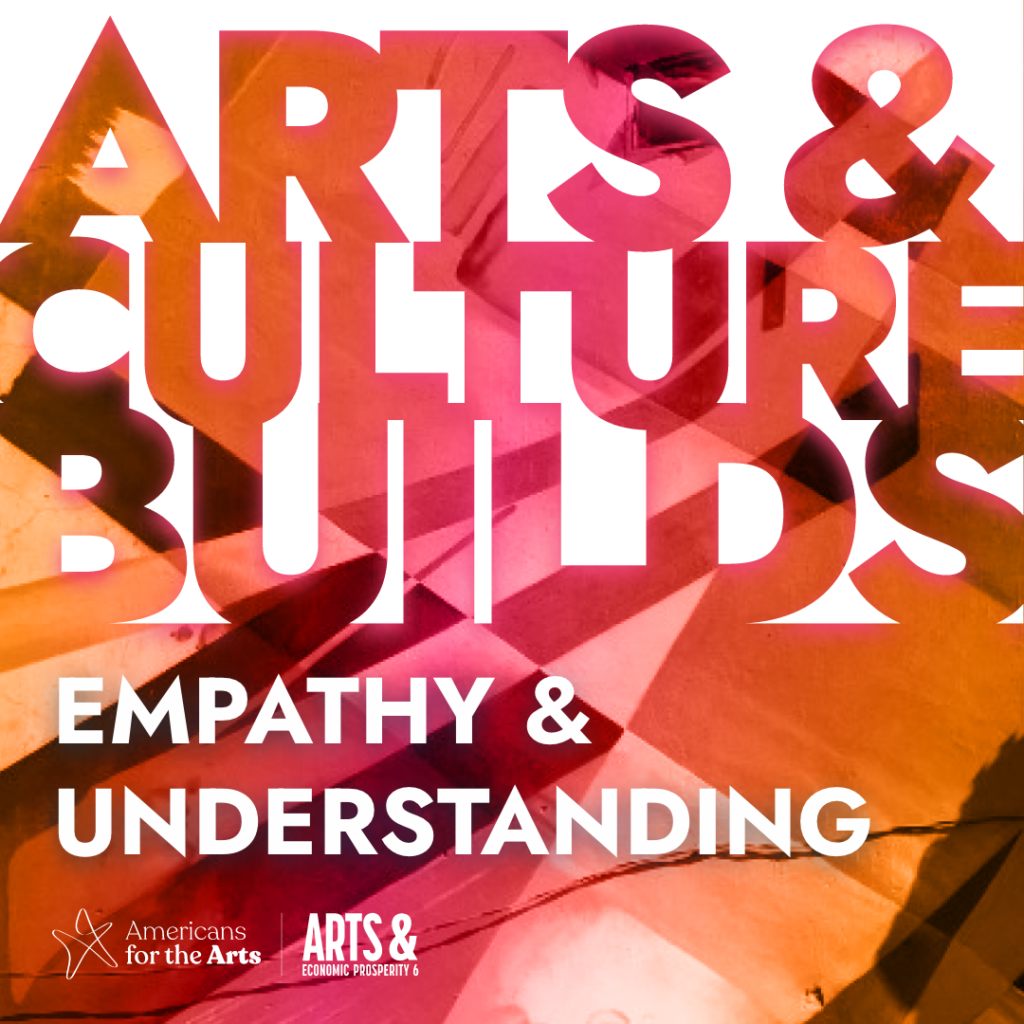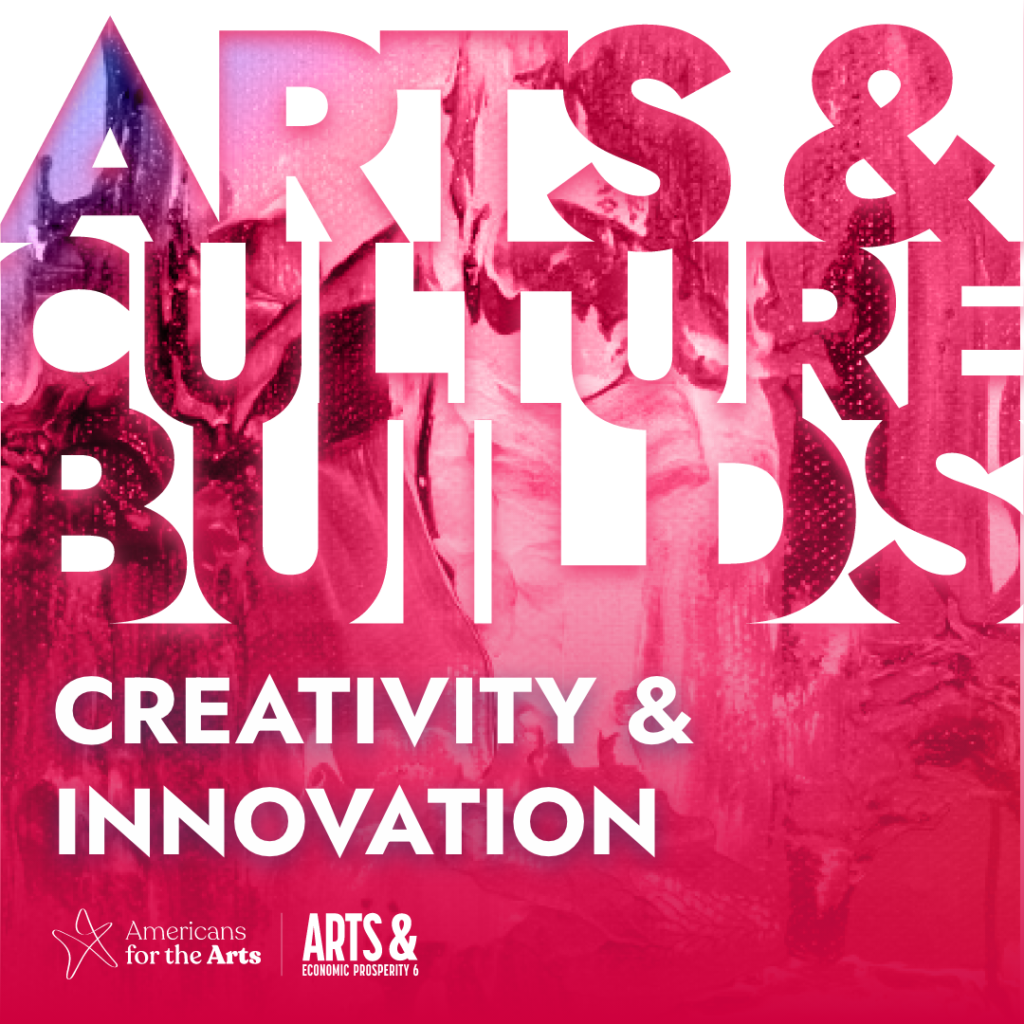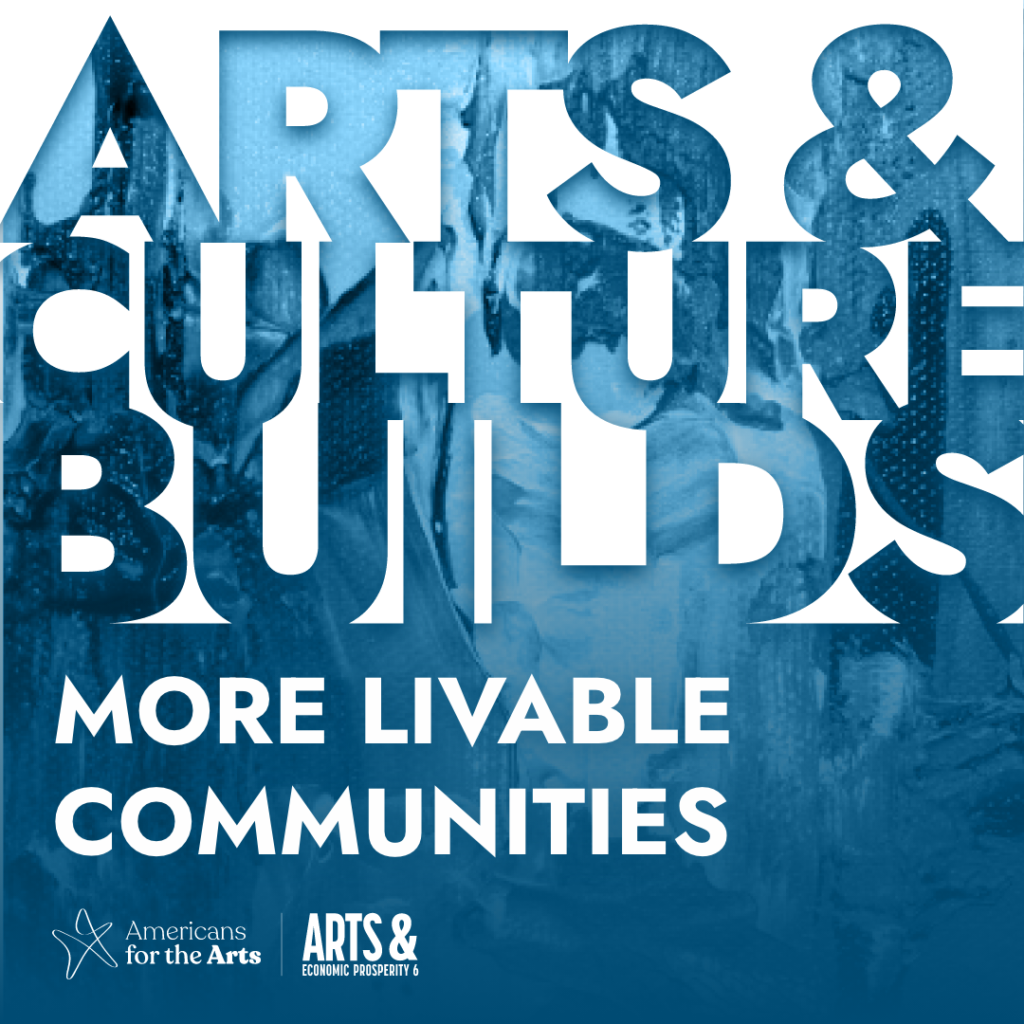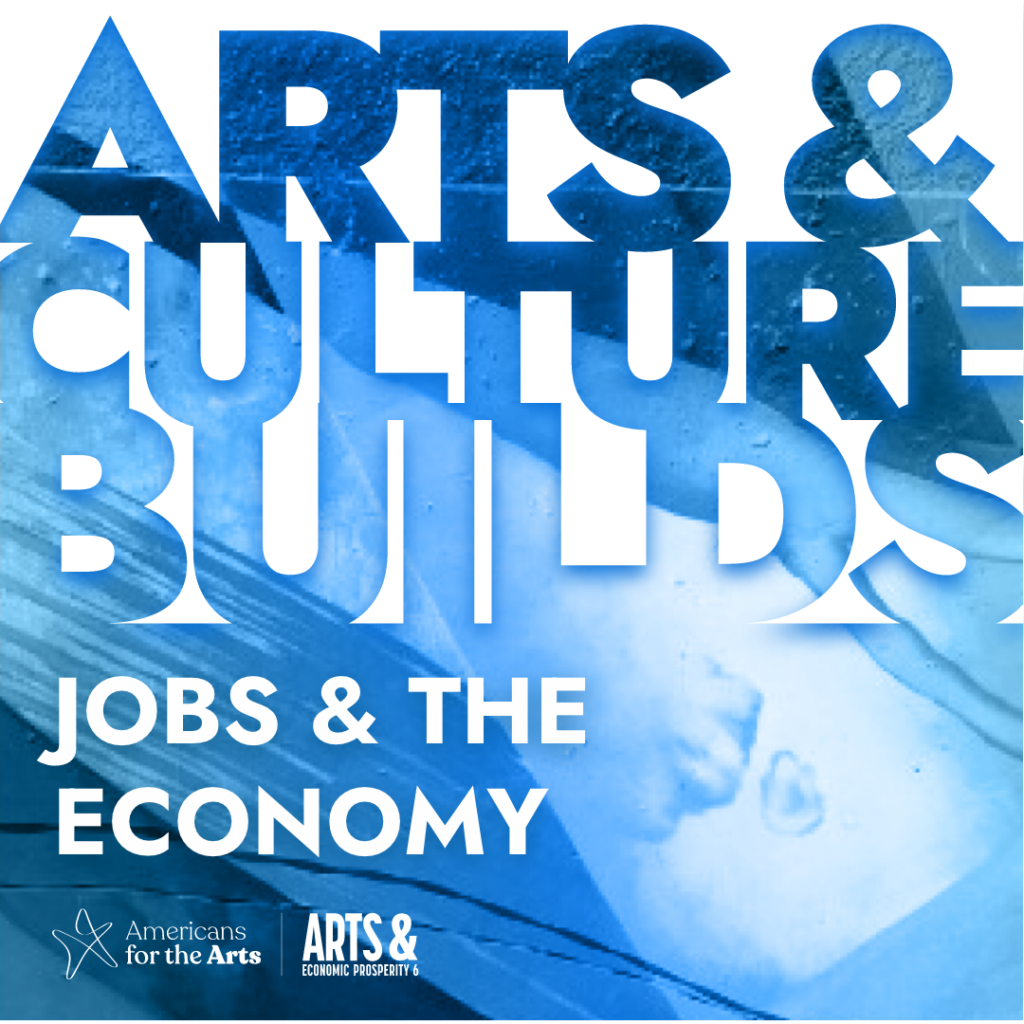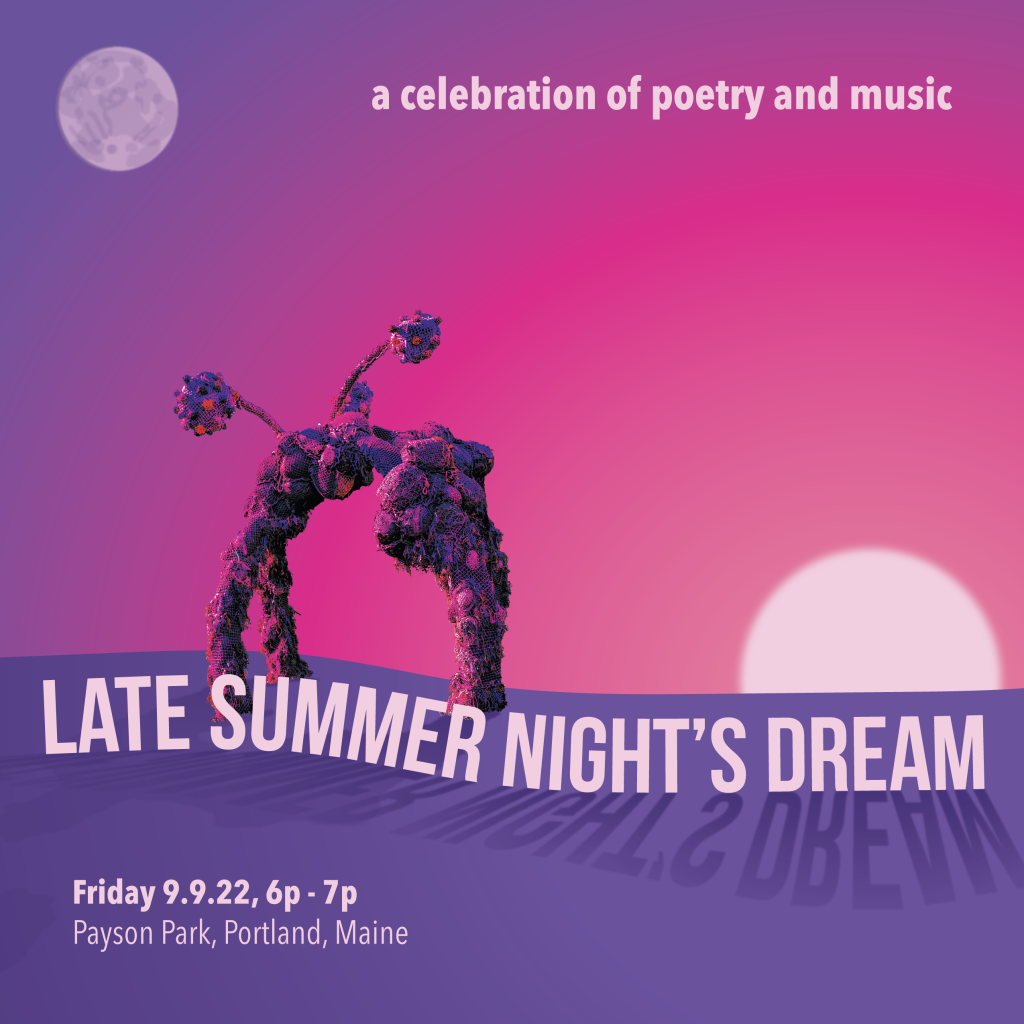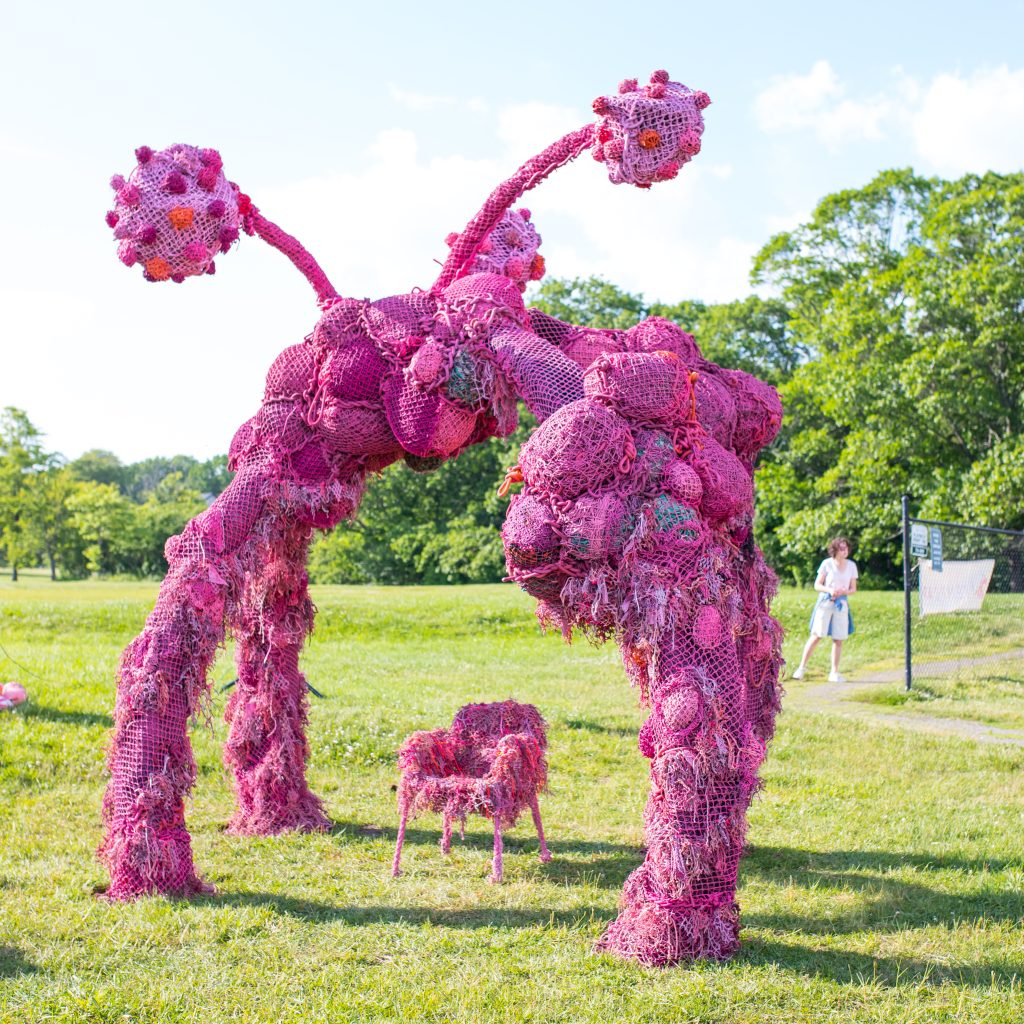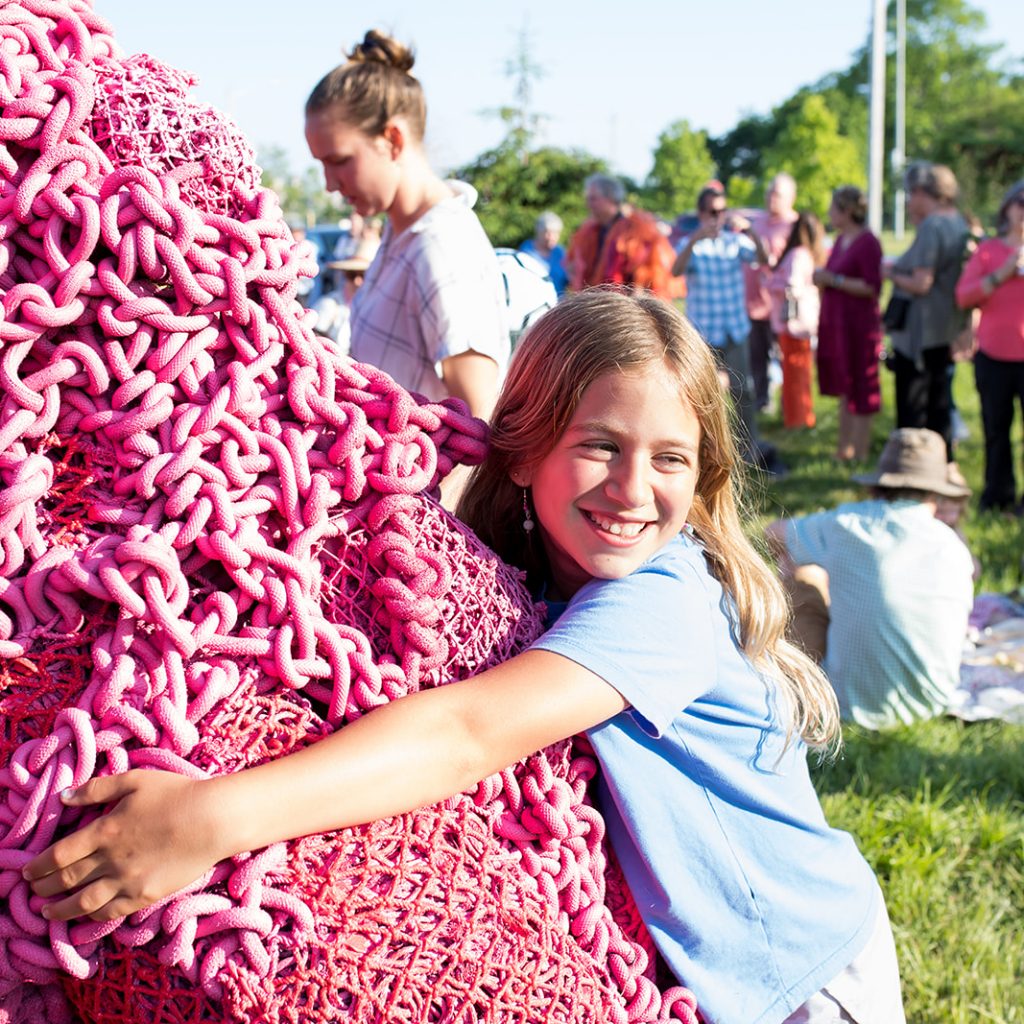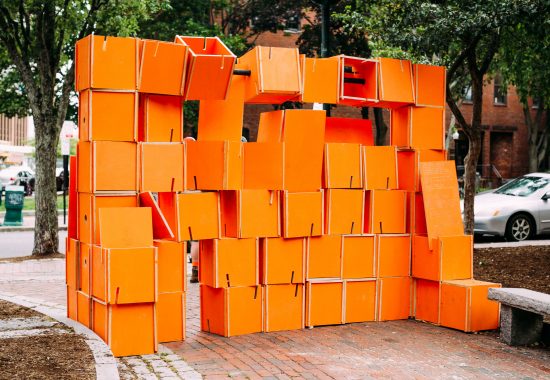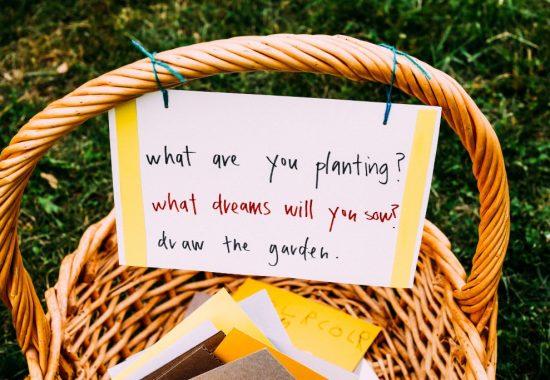Dates: Friday, June 24, 2022 + Saturday, June 25, 2022
Time: 8pm – 9pm
Location: Payson Park at the site of Pamela Moulton’s Beneath the Forest, Beneath the Sea
Rain date: 6/26/22
About the event
As a mental health counselor and a craniosacral therapist, respectively, Kristen Stake and Hannah Wasielewski have felt tremendous pressure, during these times, to HEAL their clients–on demand!–while also going through their own challenges with Covid, climate change, white supremacy, and the threat of nuclear war. This juxtaposition of helping while hurting, has led them to ask themselves: How can we leverage these unrealistic expectations to catapult ourselves into a realm where true connection and healing are possible?
Equipped with fake Tarot cards, intake forms, and fluorescent wigs, the two therapist-dancers will guide the audience through an interactive experience in Payson Park using sacred and mundane objects to perform the problem of community, to cast spells, abolish bad energies, and invoke ancestors for karmic healing. This performance is part of a lifelong choreography project centered around healing, grieving, and improvisation.
This project has received generous support from the New England Foundation for the Arts, the Maine Arts Commission, Casco Bay Movers, and Hewnoaks Artist Residency.
General info
The performance duration is 60 minutes and will have optional participatory elements. There will be some chairs on site, but you may want to bring a picnic blanket and an extra layer of clothing.
Performance material is not suitable for children.
This event is part of TEMPOart’s summer event series, Every Tree Tells a Story, curated by Pamela Moulton.
This event is FREE and OPEN to the public.
About the Company
Imaginary Island is an experimental dance company started by Kristen Stake and Hannah Wasielewski located in Portland, Maine. Imaginary Island is a nod to Ram Island Dance (a modern company active from 1968-2001). Located somewhere in the Casco Bay, Imaginary Island is home to the dance that can’t be erased because it exists in our collective imagination. Their work is influenced by the trials and tribulations of Contact Improvisation, the “fake healing” scores taught by Keith Hennessy, the effervescent spirit of (d)ancestor Kathleen Hermesdorf, and the experiential community gatherings of Anna Halprin. Through this project, they embark on a lifelong dance process centered around healing, grieving, and improvisation.
www.imaginaryisland.art
About the Artists
Hannah Wasielewski
Hannah Wasielewski (she/her) is a dancer, performer, educator, and biodynamic craniosacral therapist based in Portland, Maine. She has been engaged in choreographic practice as a soloist and in collaboration since 2012, working throughout North America and abroad in Europe. Her current collaboration, (ii) Imaginary Island, with Kristen Stake, is a lifelong dance process centered around healing, grieving, and improvisation. Previously based in the Bay Area, she works with her sister, Amy, and has performed with Sara Shelton Mann, FAKE Company/Kathleen Hermesdorf, Kinetech Arts/Daiane Lopes da Silva, and Sara Kraft/ KraftyWorks.
Kristen Stake
Kristen Stake is a dance artist in Portland, Maine. Rooted in DIY values, her work explores ritual, memory, and emotional-relational dynamics. She has danced with Melinda Buckwalter, Vanessa Anspaugh, Terre Unite Parker, Katarina Eriksson, and Michael Figueroa. From 2016-2020, she was the director of the Living Room Dance Collective. She has held many jobs in the “helping” fields and currently works as a mental health counselor.
Aretha Aoki and Meredith Glisson provided invaluable dramaturgical support.



